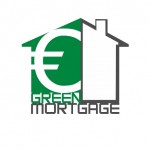Energy efficient or “green” mortgages represent a potential for Romania to take the lead in the region by introducing an innovative real estate financial tool for reducing energy costs, improving energy security and increasing adoption of better construction technology, materials and techniques.
This pilot project aims at creating a controlled environment through a consortium between a bank, a developer and an energy auditor to implement the concept of energy efficient mortgages in Romania and demonstrate its financial, social and environmental benefits.
The introduction of such a financial product is very timely in the context of the current European regulations on buildings that make energy efficient ratings compulsory for all new and existing buildings. Therefore, a successful pilot project of this kind will be easily replicated at a national scale upon the upcoming implementation of these regulations.
The project proposes the creation of a consortium between a real estate developer, a bank and a certified energy auditing company.
o The developer would agree to create a residential development with high energy efficiency standards
o A qualified energy auditor would assess/rate and control the energy efficiency of the development, quantify the energy savings as compared to a regular building, and issue the required energy efficiency rating certificate.
o The bank would evaluate the monetary value of the energy savings and will implement preferential:
– Project finance: increased financing for the energy efficiency features (this function may be performed by an investor, not necessarily the bank)
– Energy efficient mortgages for the buyers of the homes
o The homebuyer receives a more valuable home and pays the same or less for their total monthly cost due to realized energy savings.
Such a consortium creates a mechanism that allows for the energy efficiency savings to be transferred from the developer to the home buyers without any financial impact. The banks role is to allow the energy efficiency improvements to pay for themselves and to reduce both the initial financial risk of both the developer (who gains certainty of a market for the higher performing building) and the home buyer (whose upfront investment is minimized).
For more details, please click here.


